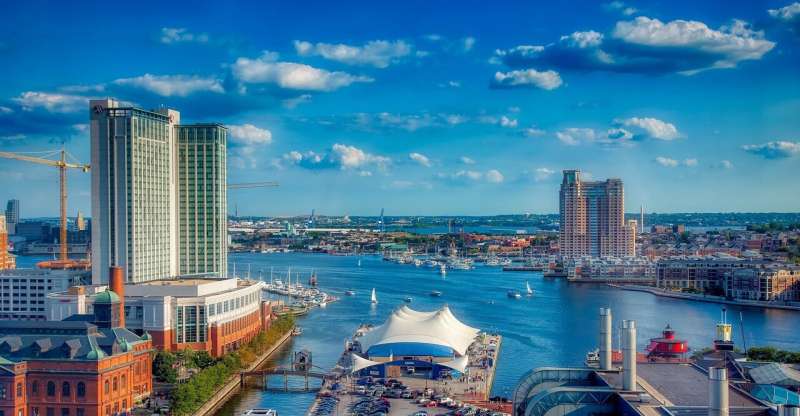This article has been reviewed according to Science X's editorial process and policies. Editors have highlighted the following attributes while ensuring the content's credibility:
fact-checked
reputable news agency
proofread
Fish kill results in about 24,000 dead fish in Baltimore's Inner Harbor

Maryland officials investigated a fish kill on Sept 04 in Baltimore's Inner Harbor, after about 24,000 dead fish were observed between the Rusty Scupper and the Maryland Science Center, as well as near Piers 5 and 6.
The dead were almost exclusively Atlantic menhaden, though Maryland Department of the Environment investigators also observed several catfish, white perch and a few blue crabs, wrote agency spokesman Jay Apperson in a statement.
MDE investigators do not believe that a particular pollution incident is to blame, Apperson said. Instead, they believe the die-off can be explained by a natural phenomenon known as a turnover event.
Turnover events tend to occur in the Baltimore Harbor near Memorial Day and Labor Day, when warm days quickly give way to cool nights, said Alice Volpitta, Baltimore Harbor Waterkeeper for the nonprofit Blue Water Baltimore.
When night falls, bringing far colder temperatures, the top layer of water in the harbor rapidly cools off and becomes denser, causing it to sink toward the bottom. That brings the water formerly on the bottom of the harbor to the top.
That's a problem because the water near the harbor bottom is depleted of oxygen. Fish trapped in the low-oxygen water will perish, causing large-scale fish kills, Volpitta said.
Though the turnover event was caused by a natural process, the existence of that low-oxygen water, often called a dead zone, isn't natural. It is the result of pollution, including from fertilizers, wastewater and other sources of nutrients, flowing into the water.
"The issue is exacerbated by the fact that we have this dead zone at the bottom of our harbor to begin with," Volpitta said. "While this is a natural turnover event caused by dropping temperatures as we approach the fall, the problem is exacerbated by pollution that's flowing off of the land into the water."
Atlantic menhaden—small, nutrient-packed fish—are critical to the bay's ecosystem, and serve as a key food source for bay predators like rockfish and bluefish.
Menhaden are particularly susceptible to low-oxygen conditions, Volpitta said, so it isn't surprising they make up most of the death toll. But if the conditions persist, other harbor wildlife could be impacted as well.
"In previous years, when we see these fish kills, we'll see all kinds of things and so it remains to be seen whether or not it'll be bad enough to affect other fish species as well," Volpitta said.
Officials from the National Aquarium said in a news release that they had seen small animals taking shelter in the shallow channel that houses the aquarium's new floating wetland exhibit. The exhibit has an aeration system that can increase water oxygen levels amid low-oxygen events.
Aquarium officials believe the Inner Harbor is experiencing "pistachio tide" and "mahogany tide" algae blooms. The former is a result of the turnover process, bringing sulfur bacteria to the surface. The mahogany tide is caused by a combination of nutrient runoff and "a stretch of warm, dry days with little water disruption from wind or rain."
"These conditions are perfect for the creation of a brown algae that impacts how deeply sunlight can permeate the water's surface," read the aquarium's news release.
On Aug. 22, Blue Water Baltimore reported a similar fish kill, which also impacted menhaden, near Domino Sugar along the waterfront. They also observed a green "pistachio tide" in the water and low-oxygen conditions.
MDE counted 1,700 deceased fish then, and also measured oxygen-depleted conditions in the harbor, Apperson said.
Blue Water's monitoring team visited the Inner Harbor by boat, and Volpitta received their photographs of thousands of floating dead fish.
Crews worked to remove the deceased fish that washed up on the promenade along the water, and used a boat outfitted with conveyor belts to scoop them from the harbor.
"It's really sad. It's heartbreaking," Volpitta said. "It's always interesting to me when we see a fish kill, because that's the time you can see the true biodiversity of what's living in there—but they're all dead."
2024 Baltimore Sun. Distributed by Tribune Content Agency, LLC.



















